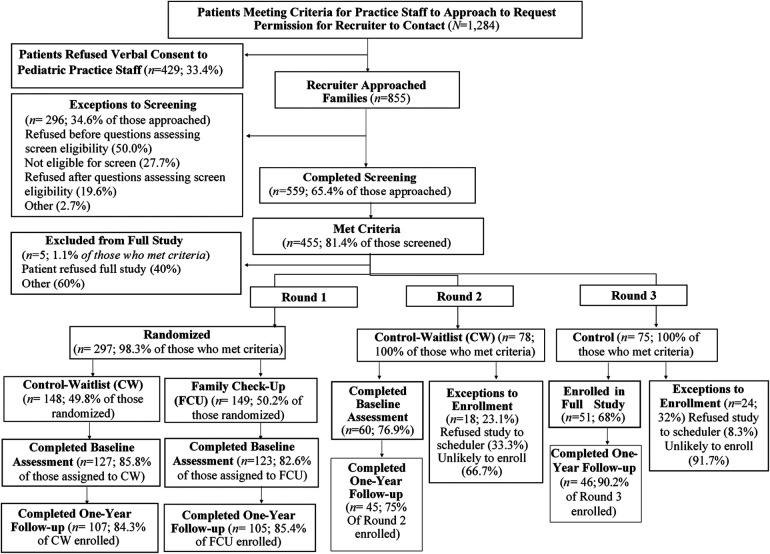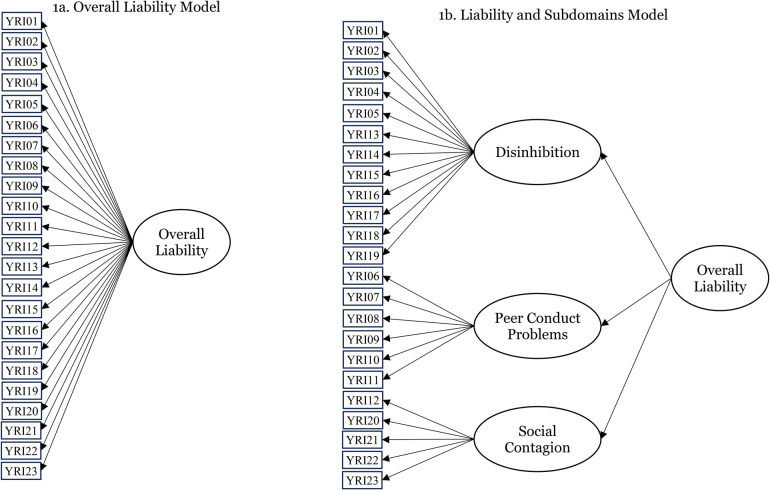Ty A Ridenour, Nisha O'Shea Gottfredson, Jason Williams, Daniel S Shaw, Maureen D Reynolds, Cheryl A Roberts, Richard Spoth, David R Garnica-Agudelo, Idil Baran, Aysenil Belger, Diana H Fishbein
下载PDF
{"title":"青少年风险指数:心理测量学,预测早期青少年物质使用的开始,以及检测到的责任广度。","authors":"Ty A Ridenour, Nisha O'Shea Gottfredson, Jason Williams, Daniel S Shaw, Maureen D Reynolds, Cheryl A Roberts, Richard Spoth, David R Garnica-Agudelo, Idil Baran, Aysenil Belger, Diana H Fishbein","doi":"10.3389/frcha.2025.1513607","DOIUrl":null,"url":null,"abstract":"<p><strong>Introduction: </strong>Over the last two decades, drug use epidemics have occurred across the world, including in countries with well-funded services for treatment and recovery, underscoring the need to bolster primary prevention. Moreover, substance use (SU) and SU disorders (SUDs) contribute to the etiology and exacerbation of many medical and psychiatric illnesses. The first step in providing selective/indicated prevention for SU/SUD is identifying high liability (overall risk). We evaluated the <i>Youth Risk Index</i>© (YRI) screening tool, which measures liability to SU and related behaviors, frequently before they are initiated, at ages 8-14.</p><p><strong>Methods: </strong>Using data from five previously recruited samples of youth, psychometric analyses consisted of (1) confirmatory factor analyses comparing two latent structures, (2) non-invariance tests between sexes and purposes for using the YRI (research or screening), and (3) concurrent and predictive validity. Reports from 4,495 youths aged 8-13 were analyzed, with approximately half of the sample representing each sex, each research purpose, and a Caucasian identity.</p><p><strong>Results: </strong>A latent structure with one second-order factor (Overall Liability) and three first-order factors (Disinhibition, Peer Conduct Problems, and Social Contagion) best fit the observed data and was well-replicated within sexes and purposes. Partial scalar non-invariance between purposes occurred for Overall Liability involving two items. Disinhibition had partial non-invariance between sexes and purposes involving the same item. Greater non-invariance was found for Peer Conduct Problems and Social Contagion. Traditional and non-invariance-adjusted scores correlated highly, with values of 0.96 for Overall Liability, 0.99 for Disinhibition, 0.89 for Peer Conduct Problems, and 0.93 for Social Contagion. Traditional scoring provided a good to excellent area under the receiving operating characteristic curve for concurrent and 1-year SU and conduct problems. Greater YRI scores were associated with greater youth-reported depression, sensation seeking, substance use, conduct disorder behaviors, and parental problems from SU and/or legal problems, as well as less self-management and parent fortification and poorer performances in planning, problem-solving, and low-load working memory tasks. YRI scores correlated less with parent reports on youths than with youth self-reports.</p><p><strong>Discussion: </strong>In sum, YRI scores encapsulate many segments of risk for SU/SUD and related behavior problems, which is critical to accurately identify the need for and provision of selective/indicated prevention because of the manifold risk factors for, and complex etiology of, SU/SUD.</p>","PeriodicalId":73074,"journal":{"name":"Frontiers in child and adolescent psychiatry","volume":"4 ","pages":"1513607"},"PeriodicalIF":0.0000,"publicationDate":"2025-06-27","publicationTypes":"Journal Article","fieldsOfStudy":null,"isOpenAccess":false,"openAccessPdf":"https://www.ncbi.nlm.nih.gov/pmc/articles/PMC12245781/pdf/","citationCount":"0","resultStr":"{\"title\":\"The Youth Risk Index: psychometrics, predicting the initiation of early adolescent substance use, and the breadth of liability detected.\",\"authors\":\"Ty A Ridenour, Nisha O'Shea Gottfredson, Jason Williams, Daniel S Shaw, Maureen D Reynolds, Cheryl A Roberts, Richard Spoth, David R Garnica-Agudelo, Idil Baran, Aysenil Belger, Diana H Fishbein\",\"doi\":\"10.3389/frcha.2025.1513607\",\"DOIUrl\":null,\"url\":null,\"abstract\":\"<p><strong>Introduction: </strong>Over the last two decades, drug use epidemics have occurred across the world, including in countries with well-funded services for treatment and recovery, underscoring the need to bolster primary prevention. Moreover, substance use (SU) and SU disorders (SUDs) contribute to the etiology and exacerbation of many medical and psychiatric illnesses. The first step in providing selective/indicated prevention for SU/SUD is identifying high liability (overall risk). We evaluated the <i>Youth Risk Index</i>© (YRI) screening tool, which measures liability to SU and related behaviors, frequently before they are initiated, at ages 8-14.</p><p><strong>Methods: </strong>Using data from five previously recruited samples of youth, psychometric analyses consisted of (1) confirmatory factor analyses comparing two latent structures, (2) non-invariance tests between sexes and purposes for using the YRI (research or screening), and (3) concurrent and predictive validity. Reports from 4,495 youths aged 8-13 were analyzed, with approximately half of the sample representing each sex, each research purpose, and a Caucasian identity.</p><p><strong>Results: </strong>A latent structure with one second-order factor (Overall Liability) and three first-order factors (Disinhibition, Peer Conduct Problems, and Social Contagion) best fit the observed data and was well-replicated within sexes and purposes. Partial scalar non-invariance between purposes occurred for Overall Liability involving two items. Disinhibition had partial non-invariance between sexes and purposes involving the same item. Greater non-invariance was found for Peer Conduct Problems and Social Contagion. Traditional and non-invariance-adjusted scores correlated highly, with values of 0.96 for Overall Liability, 0.99 for Disinhibition, 0.89 for Peer Conduct Problems, and 0.93 for Social Contagion. Traditional scoring provided a good to excellent area under the receiving operating characteristic curve for concurrent and 1-year SU and conduct problems. Greater YRI scores were associated with greater youth-reported depression, sensation seeking, substance use, conduct disorder behaviors, and parental problems from SU and/or legal problems, as well as less self-management and parent fortification and poorer performances in planning, problem-solving, and low-load working memory tasks. YRI scores correlated less with parent reports on youths than with youth self-reports.</p><p><strong>Discussion: </strong>In sum, YRI scores encapsulate many segments of risk for SU/SUD and related behavior problems, which is critical to accurately identify the need for and provision of selective/indicated prevention because of the manifold risk factors for, and complex etiology of, SU/SUD.</p>\",\"PeriodicalId\":73074,\"journal\":{\"name\":\"Frontiers in child and adolescent psychiatry\",\"volume\":\"4 \",\"pages\":\"1513607\"},\"PeriodicalIF\":0.0000,\"publicationDate\":\"2025-06-27\",\"publicationTypes\":\"Journal Article\",\"fieldsOfStudy\":null,\"isOpenAccess\":false,\"openAccessPdf\":\"https://www.ncbi.nlm.nih.gov/pmc/articles/PMC12245781/pdf/\",\"citationCount\":\"0\",\"resultStr\":null,\"platform\":\"Semanticscholar\",\"paperid\":null,\"PeriodicalName\":\"Frontiers in child and adolescent psychiatry\",\"FirstCategoryId\":\"1085\",\"ListUrlMain\":\"https://doi.org/10.3389/frcha.2025.1513607\",\"RegionNum\":0,\"RegionCategory\":null,\"ArticlePicture\":[],\"TitleCN\":null,\"AbstractTextCN\":null,\"PMCID\":null,\"EPubDate\":\"2025/1/1 0:00:00\",\"PubModel\":\"eCollection\",\"JCR\":\"\",\"JCRName\":\"\",\"Score\":null,\"Total\":0}","platform":"Semanticscholar","paperid":null,"PeriodicalName":"Frontiers in child and adolescent psychiatry","FirstCategoryId":"1085","ListUrlMain":"https://doi.org/10.3389/frcha.2025.1513607","RegionNum":0,"RegionCategory":null,"ArticlePicture":[],"TitleCN":null,"AbstractTextCN":null,"PMCID":null,"EPubDate":"2025/1/1 0:00:00","PubModel":"eCollection","JCR":"","JCRName":"","Score":null,"Total":0}
引用次数: 0
引用
批量引用
The Youth Risk Index: psychometrics, predicting the initiation of early adolescent substance use, and the breadth of liability detected.
Introduction: Over the last two decades, drug use epidemics have occurred across the world, including in countries with well-funded services for treatment and recovery, underscoring the need to bolster primary prevention. Moreover, substance use (SU) and SU disorders (SUDs) contribute to the etiology and exacerbation of many medical and psychiatric illnesses. The first step in providing selective/indicated prevention for SU/SUD is identifying high liability (overall risk). We evaluated the Youth Risk Index © (YRI) screening tool, which measures liability to SU and related behaviors, frequently before they are initiated, at ages 8-14.
Methods: Using data from five previously recruited samples of youth, psychometric analyses consisted of (1) confirmatory factor analyses comparing two latent structures, (2) non-invariance tests between sexes and purposes for using the YRI (research or screening), and (3) concurrent and predictive validity. Reports from 4,495 youths aged 8-13 were analyzed, with approximately half of the sample representing each sex, each research purpose, and a Caucasian identity.
Results: A latent structure with one second-order factor (Overall Liability) and three first-order factors (Disinhibition, Peer Conduct Problems, and Social Contagion) best fit the observed data and was well-replicated within sexes and purposes. Partial scalar non-invariance between purposes occurred for Overall Liability involving two items. Disinhibition had partial non-invariance between sexes and purposes involving the same item. Greater non-invariance was found for Peer Conduct Problems and Social Contagion. Traditional and non-invariance-adjusted scores correlated highly, with values of 0.96 for Overall Liability, 0.99 for Disinhibition, 0.89 for Peer Conduct Problems, and 0.93 for Social Contagion. Traditional scoring provided a good to excellent area under the receiving operating characteristic curve for concurrent and 1-year SU and conduct problems. Greater YRI scores were associated with greater youth-reported depression, sensation seeking, substance use, conduct disorder behaviors, and parental problems from SU and/or legal problems, as well as less self-management and parent fortification and poorer performances in planning, problem-solving, and low-load working memory tasks. YRI scores correlated less with parent reports on youths than with youth self-reports.
Discussion: In sum, YRI scores encapsulate many segments of risk for SU/SUD and related behavior problems, which is critical to accurately identify the need for and provision of selective/indicated prevention because of the manifold risk factors for, and complex etiology of, SU/SUD.



 求助内容:
求助内容: 应助结果提醒方式:
应助结果提醒方式:


